
Scope Marketing (Communications UK) Ltd, The Scope Complex, Wills Rd, Totnes, Devon TQ9 5XN
Tel: +44 1803 864569 Fax: +44 1803 863716
CONV7MAC/1
Installation & User Manual
ConneXionsConneXions II
RS232 Radio Paging System (Multi Port, Mains Version)
ConneXionsConneXions II V7 MAC

ConneXions II V7 MAC Mains, Multi Port Version
CONV7MAC 05/98 Issue 1
1
PREFACE
Important Installation Information
It is the purchasers’ responsibility to determine the suitability of this equipment and its derivatives for any
given application, Scope cannot give specific advice in this manual, as each use will require independent
evaluation.
Scope has, wherever possible, employed extra safeguards to monitor the system’s performance. Certain
system installations, operational requirements or budgets may, however, limit the effectiveness of these
safeguards. Again, the suitability of the system for any given application must therefore be decided by the
installer and their customer, relative to the application and risk.
Good working practice dictates that a suitable system installation log must be generated, together with a
record of the dates when the system has been manually checked, (with the aid of signal strength meters
etc.) enabling the system performance to be compared with the original installation data.
Scope has no control of the use and application of the frequencies issued by the Radiocommunications
Agency. Some equipment that is licensed may have greater protection than other equipment which is
operated on a WT Act License Exempt basis.
The supply of this equipment is governed by our standard terms and conditions of sale, which can be found
on the reverse of all order acknowledgements*, proforma invoices*, delivery notes, price lists and invoices.
Alternatively, these can be provided on request.
* Faxed proforma invoices and quotations refer to “conditions available upon request”.
Important Safety Information
Scope products are designed to operate safely when installed and used according to general safety
practices. The following requirements should be observed at all times.
Do NOT subject this equipment to:
Mechanical shock
Excessive humidity or moisture
Extremes of temperature
Corrosive liquids
This equipment is designed for indoor use, unless expressly stated otherwise, and must not be used in
classified Hazardous Areas, including areas containing explosive or flammable vapours, unless express
authorisation has been given in writing by the manufacturer. If in doubt, consult your local product dealer
for further information.
Do not obstruct any slots or openings in the product. These are provided for ventilation to ensure reliable
operation of the product and to protect it from overheating.
Only use a damp cloth for cleaning (not liquid or aerosol based cleaners), and ensure that any power is
removed from the unit prior to beginning the cleaning operation.

ConneXions II V7 MAC Mains, Multi Port Version
CONV7MAC 05/98 Issue 1
2
Preface
Important Safety Information
Removal of covers from the equipment must only be undertaken by authorised service personnel, who
must ensure that power is isolated prior to removal.
Installation
Installation must only be undertaken by an Approved contractor, who shall ensure that all work is carried
out in compliance with IEE Wiring Regulations. For mains powered equipment, a readily accessible
isolating fuse or switched socket must be located within 1 metre of the equipment.
No User Serviceable Parts
Alteration or modification to any part of this equipment, without the prior written consent of the
manufacturer, will invalidate all Approvals and Warranties attaching to the equipment. Further liability for
the operation of the equipment, under the applicable law, will pass to the user, who will absolve the
manufacturer of any further responsibility for it’s correct operation and use.
Liability
Scope does not accept liability for any damage or injury, howsoever caused as the result of misuse of this
equipment. It is the responsibility of the user to ensure that the equipment is operated in the manner for
which it was intended and that it is the correct item of equipment for the required task.
Warranty
This product is warranted as free from defects of workmanship and materials for a period of one year from
the original purchase date. During this time, if there is a defect or malfunction of this product, Scope will,
with proof of purchase, repair or replace at it’s discretion any defective parts, free of charge. This does not
include where the adjustments, parts and repair are necessary due to circumstances beyond the control of
Scope, including but not limited to fire or other casualty, accident, neglect, abuse, abnormal use or battery
leakage damage.
********************************************************************************

ConneXions II V7 MAC Mains, Multi Port Version
CONV7MAC 05/98 Issue 1
3
System Overview
The Scope ConneXions II is a POCSAG data display radio paging system which can be used to transmit
both text and numeric messages direct to pocket pagers carried by individuals or entire groups.
Information is input by way of three RS232 serial ports. The unit can also be used in conjunction with an
optional telephone interface, thereby enabling any telephone within the building or complex of buildings to
access the paging system. Up to 9,999 pagers can be supported on any one system.
Note ! This system requires a valid Radiocommunications Agency licence for operation in the UK. It is the
user’s responsibility to apply for an On-Site Paging licence on form RA5 for any of the frequencies listed
below*. Where equipment has been supplied on 461.300 MHz, the user must apply for an SRBR (Short
Range Business Radio) Licence on form RA 283.
The relevant clauses on the RA5 form (Section C) should be completed as follows:
8. Base Equipment make and model: Connexions II CONX7MAC
10. Transmitter Type Approval No. 13249 CONX7AC
11. Transmitting Frequency: 459.225 MHz or 459.275 MHz, 459.050 MHz or 459.100 MHz*
12. Effective Radiated Power: 0.5W
*please refer to delivery note for chosen frequency
Section 1: Installation
The information contained in this Section is intended for use by authorised system installation
engineers only. Unqualified personnel should not undertake installation of this equipment under
any circumstances whatsoever.
Siting of the hardware
Before locating the hardware in any given location, it is important to take into account the range of
operation that you require to obtain from your system. The standard transmitter can quite easily provide
ranges of up to a mile or more and will provide excellent propagation on most industrial sites, covering a
considerable area with just a quarter wave antenna (BNC terminated) connected directly to the unit.
For coverage of very large sites, or where exceptionally difficult operating conditions exist, it may be
advantageous to install an external antenna. Installing the transmitter on the second or third floor of a
building will more often than not boost overall range. However, horizontal range is not always required as
much as propagation through a multi-storey building. Here it may be more useful to use a small external
antenna mounted outside the building at half the building height. Sometimes range is required more in one
direction than in the other: moving the aerial to one side of the building can provide a bias in the required
direction, which may overcome the range difficulties. (See section: Other Antennas).
Important: coaxial feeds over 5 metres must employ low loss 50 ohm coax. We normally do not
recommend feeds of more than 15 metres for standard applications. However, we suggest you contact our
technical department where other considerations may prove this to be impractical.
A further consideration is the distance between the transmitter and the source of the data feeding the
transmitter. With a standard RS232 serial interface, data cables should not exceed 15 metres. These
cables should be screened/shielded and must be kept clear of sources of induced magnetic or electrical
noise. In the event that distances of over 15 metres are required, additional drivers or amplifiers must be
installed at both ends of the data link.

ConneXions II V7 MAC Mains, Multi Port Version
CONV7MAC 05/98 Issue 1
4
Some major points to consider when installing equipment:
1 Never install antennas near or adjacent to telephone, public address or data
communication lines or overhead power cables.
2 Avoid, where ever possible, running antenna coax alongside other cables.
3 Avoid mounting the transmitter in the immediate vicinity of telephone exchanges
or computer equipment.
4 Always use proprietary 50 ohm coaxial cable between the antenna and the
transmitter. If cable runs exceed 5 metres, always use low loss 50 ohm cable
such as RG213, UR67 or equivalent.
Coaxial cable intended for TV, Satellite or CCTV installations is normally 75 OHM
and therefore totally unsuitable for any transmitter installation manufactured by
Scope.
5 Also remember that the performance of the system will be effected by the type of
material the unit is mounted on and its surroundings.
The following is a list of materials that this transmitter will be adversely affected by
if mounted on or if mounted in close proximity to:
a) Foil back plasterboard
b) Metal mesh or wire reinforced glass
c) Metal sheeting, large mirrors or suspended ceilings
d) Lift shafts
All of the above can reflect radio waves and thereby reduce the capability of the
transmitter to perform its desired functions.
6 The circuit boards within this equipment may be harmed by Electrostatic
Discharge (ESD). Installers should avoid touching the circuitry wherever possible,
and should ensure that adequate anti-static procedures are adhered to at all times
(earth bonding with wrist straps, etc).
7 Warning! Never transmit without an aerial attached to the transmitter
8 Warning! Carefully check the Installation section in this manual covering data
pin connections prior to installation. Damage caused by incorrect connection is
the responsibility of the installer!

ConneXions II V7 MAC Mains, Multi Port Version
CONV7MAC 05/98 Issue 1
5
Installation
The following procedure must be adhered to when installing the ConneXions paging system. Ensure you
have taken into consideration all of the above information before selecting the location for your transmitter.
If in doubt please feel free to telephone the technical helpline on 01803 864569.
1 Remove the cover from the ConneXions II transmitter unit by slackening the four Pozi head
screws located at the top and bottom of the unit (see Diagram 1).
2 Carefully lift off the cover and set aside.
3 The transmitter should be fixed to an even wall surface using suitable screws fitted through the
holes provided in the chassis plate. Hold the chassis up to the chosen location and with the aid of a
pencil mark the position of the mounting holes.
Warning: Do not use the chassis plate as a template for drilling the holes into the wall. Hammer drills
vibrating through the chassis may irreparably damage the quartz crystals on the printed circuit boards.
4 Place the ConneXions transmitter over the mounting holes and secure the unit with suitable
screws. Check that the chassis plate does not bend and that the screws do not snag or pinch any
of the internal cables.
5 Connect the antenna to the unit via the BNC connector located at the top of the housing. If the
antenna is an external antenna, or an antenna which is separate from the transmitter unit itself,
ensure that the previous criteria covered under the section headed Siting of the Hardware, have
been strictly adhered to (also see section headed Other Antennas).
6 It is important to note that due to the number of interfaces brought out to the 9-way ‘D’ connector,
great care should be taken to use only the lines which are applicable to your installation. Failure to
comply with this instruction will almost certainly DESTROY the unit.
In your application the transcoder has been configured for a total of three RS232 inputs.
PL3 and PL2 SERIAL PORTS (9 way D type plug)
PIN SIGNAL DIRECTION
1 N/C
2 RECEIVE DATA (RX) IN
3 TRANSMIT DATA (TX) OUT
4 DATA TERMINAL READY (DTR) OUT
5 GROUND (GND)
6 N/C
7 REQUEST TO SEND (RTS) OUT
8 CLEAR TO SEND (CTS) IN
9 +5V (PL2 only) (for Scope peripherals)
PL1 SERIAL PORT (25 way D type plug)
PIN SIGNAL DIRECTION
2 TRANSMIT DATA (TX) OUT
3 RECEIVE DATA (RX) IN
4 REQUEST TO SEND (RTS) OUT
5 CLEAR TO SEND (CTS) IN
7 GROUND (GND)
20 DATA TERMINAL READY (DTR) OUT
As information passes only from the host equipment to the ConneXions transcoder, you will only need to
read the DTR line which if high shows that power is applied to the Connexions unit. The RTS line will be
high when the transcoder is ready to receive data. The ConneXions RTS line should be connected to the
host CTS line to facilitate correct handshaking. Prior to connecting the data cable(s), thoroughly check the
system pin connections as shown above.

ConneXions II V7 MAC Mains, Multi Port Version
CONV7MAC 05/98 Issue 1
6
Note: the default comms Baud rate settings are as follows:
PL3 = 9600 Baud
PL1 and PL2 = 1200 Baud
(these are factory set in software and are not hardware adjustable)
PL1 OPTIONAL (10) DRY CONTACTS
PIN DESCRIPTION
21 DRY CONTACT NO. 1
9 DRY CONTACT NO. 2
13 DRY CONTACT NO. 3
25 DRY CONTACT NO. 4
12 DRY CONTACT NO. 5
24 DRY CONTACT NO. 6
11 DRY CONTACT NO. 7
23 DRY CONTACT NO. 8
10 DRY CONTACT NO. 9
22 DRY CONTACT NO. 10
Note: the dry contact option must be specified at time of ordering together with the pre-programmed
messages required for each contact.
7 If the unit is supplied with a sealed lead acid battery, connect the battery leads to the terminals
marked BATT+ and BATT- on the power supply
+ (Positive) = Black+White stripe - (Negative) = Black
8 Replace the cover and re-tighten the four retaining screws.
9 Finally, after checking all connections, insert the mains cable supplied into the IEC type
connector located at the base of the unit and plug in to a suitable switched wall outlet. With
mains power applied, the red LED on the base of the unit should be lit.
10 The system is now ready to accept calls from the host terminal. When a call is transmitted, the
green LED on the base of the unit will light momentarily.
Radio Transmission Baud Rate
This is fixed at the factory to suit the pagers supplied and will normally be set at either 512 or 1200
baud

ConneXions II V7 MAC Mains, Multi Port Version
CONV7MAC 05/98 Issue 1
7

ConneXions II V7 MAC Mains, Multi Port Version
CONV7MAC 05/98 Issue 1
8
Section 2: System Operation
Confirmation of power connection is by way of the red LED on the base of the transcoder console.
Confirmation of transmit is provided by way of the momentary green LED on the base of the transcoder
console.
Sending data in the correct format (see Technical Section, Calling Pagers) will invoke transmitted
messages to the relevant pagers.
Problems and Fault Finding.
1 Check and re-check the data cable connections. This, together with an incorrect
signalling format, result in more faults than any other problem.
2 Check that the communications Baud rate of the host equipment matches that of
the relevant RS232 port (see page 6 for settings).
3 Check that the pagers are at least 3 metres from the transmitter and aerial. Under
certain conditions it is possible to flood the pager receivers and corrupt the data received.
4 Check that the pagers have the battery installed with the correct polarity and are
correctly powered up.
5 Check that the red power LED on the base of the transcoder is lit. If not, isolate the
power and check the fuse in the mains plug. The Scope mains input fuse on the
integral power supply and the low voltage output fuse may also be checked by a
suitably qualified technician.
6 Check that the green LED lights for the duration of the transmission. If not, go back
to the data cabling and re-check the signal format.
7 Check that the aerial is correctly installed.
Optional Dry Contacts
This option must be specified at time of ordering, along with the pre-programmed messages required.
Warning! Voltages applied to any of these contacts will cause irreparable damage!
This unit can support up to 10 dry (volt-free) contacts on PL1, which, when shorted to Pin 7 (ground), will
send a pre-programmed message to a particular pager address (which could be a to an individual, a group
or all pager operatives at the same time). These messages are pre-programmed and can only be changed
by qualified service personnel. For pin out configuration, see page 6.
The trigger time required to send a message must be greater than 1 second.
Individual messages can be sent upon both changes of state with a maximum alphanumeric length of 80
characters or 20 numeric digits.
As a default, contacts are programmed as Normally Open (N/O), with a repeat transmission every two
minutes if still active.
Note: repeats are not available where contacts are programmed as Normally Closed (N/C).

ConneXions II V7 MAC Mains, Multi Port Version
CONV7MAC 05/98 Issue 1
9
Other Antennas
The range and performance of this equipment can be improved by the addition of more efficient
antennas*. These can be installed either inside or outside the building and are connected to the transmitter
with 50 OHM coaxial cable.
Glass mount antenna (UHFGM): for installation on the inside of a suitable window. This can boost range,
especially if it is required in one direction from the building.
The centre fed half wave di-pole, measuring approximately 12 inches from tip to tip, will provide excellent
all round local signalling. This can be mounted either inside or outside a building. Two versions are
available:
1) a light duty antenna suitable for sheltered environments/internal installation (LUHFDP).
2) a heavy duty stainless unit with optional mounting hardware for more arduous applications (UHFDP).
Other antennas, including co-linears, are available for external applications. Consult our Sales Department
for further details.
Pre-terminated coaxial feeder cables are available for 5, 10 or 15 metre requirements.
Note ! High frequencies can equate to high power losses. Always use quality cable. RG58 is only
acceptable on cable runs of up to 5 metres. We recommend RG213, or equivalent, on greater lengths. If in
doubt consult our Technical Department.
*subject to license conditions. Specifically, mounting height and Effective Radiated Power (ERP).
Service Information
If you experience a problem with your equipment you must first telephone our service hotline, where we
may request that you undertake a few simple checks. If a problem still remains, we will arrange collection
of your system by overnight carrier at our expense. Upon receipt, we will endeavour to service or replace
the system within 24 working hours and return the same by overnight carrier.
We suggest that you retain the packaging for your control equipment. Incorrectly packed goods returned
for service are the responsibility of the customer. If we deem that new packaging is required before we can
return the unit, a charge will be made.
In the event that a pager requires service, return it directly to Scope in the pre-addressed service bag
supplied with your system by registered post. Ensure that you carefully fill out the service form provided.
Failure to complete this form in full will result in inevitable delays!
Pagers returned with flat, incorrectly installed or leaking batteries will be charged for!
Record your system details here for quick reference:-
Date supplied____/____/____ Serial Number of the base console_________
Transmitter frequency ________MHz Transmitter RA Type approval 13249 CONX7AC
Number of pagers supplied with the system _______
System base ID number________________ Transmitter baud rate ______________
Serial input baud rate_____________
For information on individual pager types, refer to the appropriate pager manual
For information on use with the telephone I/F, refer to the separate Telephone Interface manual.

ConneXions II V7 MAC Mains, Multi Port Version
CONV7MAC 05/98 Issue 1
10
System Specification
Mains Input: 230V 50Hz
Mains Power Consumption: 6W max
System Operating Voltage: 13.8V dc
System Power Consumption: less than 50mA standby, 300mA (transmit)
Transmitter:
Power output: 500mW
Frequency Range: 450-470 MHz
Channel Spacing: 25 KHz or 12.5KHz
Adjacent Channel: better than 200nW @ 4.5 KHz deviation
TX Baud Rate: 512 or 1200
Type Approval: ETS 300 224, MPT1383 Cert. No. 13249
Type Approval No. 13249 CONX7AC
EMC Approval: EC Type Approved to ETS 300 682 Approval No: 13331
General:
Ports: RS232 serial on PL1, PL2 and PL3
Optional 10 way dry contact I/F on PL1
Comms Baud Rate: PL1, PL2: 1200 Baud. PL3: 9600 Baud*
Footprint (mm): s328 (L) x 190 (W) x 75 (D) max
*dependent on system configuration
sexcluding aerial
Scope’s policy is one of continuous development and specifications are subject to change without notice

ConneXions II V7 MAC Mains, Multi Port Version
CONV7MAC 05/98 Issue 1
11
Section 3: Technical Information
This section provides a more in depth understanding of how messages are formatted for serial
communication from a host. It need only be studied by those intending to write their own serial comm.’s
software.
Calling Pagers
Pagers all use 7 digit numeric addresses which enables the system to support thousands of pagers without
identity clashes. Most pagers will support multiple addresses (sometimes referred to as CAP codes, RIC’s
or identities). This enables the pager not only to respond to its own unique address but also to respond to
group or global addresses.
These real 7 digit numeric codes are often substituted for shorter logical numbers which are easier to
remember. Under these conditions the host or speciality program within the transcoder will perform an
algorithm on the data string received to convert the simpler logical number back into a real 7 digit number
for transmission.
For improved data recovery without error the real 7 digit pager numbers are always spaced 8 digits apart.
To avoid system identity clashes, transcoders are provided with a base number within the range of 1000 to
1,999,000. If for example a base address of 0100,000 is applied to a transcoder, the first real pager
number will 0100,008 followed by 0100,016 and so on.
Logical pager numbers are normally used on systems fitted with the telephone interface and those which
are interfaced to personal computers. The algorithm would perform the following function:-
For example take the logical pager number of 123
The logical pager number 123 will be multiplied by 8 and then added to the base number to provide the 7
digit real number
Logical No Base No Real No
123 x 8 = 984 + 0100,000 = 0100984
Pager address 1 is normally reserved as the personal identity for that specific pager. Other addresses, of
which there can be 6 or more, can be tagged to specific pagers to form selected groups. Address 2 could,
for example, be used for all pagers to formulate a global call.
Address codes can be divided between full addresses and sub addresses. Full addresses can allow four
different bleep types, A, B, C or D, whereas sub-addresses will only accommodate a fixed bleep type. A
status line of information will normally be provided on the pager screen which will highlight the type of
bleep sent together with other status information.
Numeric Pagers
Example serial message string:-
N0012300A1234567890<CR>
The ‘N’ informs the transcoder that this message is destined for a Numeric pager. Any data not preceded
by this will be ignored.

ConneXions II V7 MAC Mains, Multi Port Version
CONV7MAC 05/98 Issue 1
12
Section 3: Technical Information
Next follows the 7 digit pager identity number. All seven digits must be used.
The letter following the identity is the beep type of which there are four valid characters, A, B, C or D.
Next follows the message to be transmitted, which can include:
0-9, space, -(hyphen), ‘U’ (letter U for ‘U’rgent), [,] open/close square brackets, (open square brackets can
also be used to identify the letter ‘C’ for ‘C’ancel). The final character sent is ‘carriage return’ which is not
transmitted but represents the end of message marker.
On sending a message to the unit in the correct format the transcoder will immediately recompose the
string into the POCSAG format and transmit the same at the pre-programmed baud rate. This will be
accompanied by the green LED lighting for the same period to show that data is being transmitted. The
time taken to transmit the message is dependent upon the pager baud rate. For 512 baud this is
approximately 4 seconds, whilst at 1200 baud the time is approximately 2 seconds. The unit can accept
sequential data at 9600 baud which will be buffered and dealt with as soon as the preceding transmission
has ended. The RTS line from the transcoder will only go high in the unlikely event that the message buffer
is full.
Alphanumeric Pagers
Example serial message string:- A0012300A This is a message <CR>
The data format is exactly as for numeric pagers, except that the recognition character at the front of the
message is changed from an ‘N’ to an ‘A’.
Transmission baud rate: in the above example, the default baud rate is sent.
To change the transmission baud rate in a message string, placing a letter “N” after the “A” will alter it to
512 baud. Placing a letter “F” after the “A” will alter it to 1200 baud.
The default setting for the Connexions V7 is 1200 baud.
************************************************************************
-
 1
1
-
 2
2
-
 3
3
-
 4
4
-
 5
5
-
 6
6
-
 7
7
-
 8
8
-
 9
9
-
 10
10
-
 11
11
-
 12
12
-
 13
13
scope RS232 Installation & User Manual
- Type
- Installation & User Manual
- This manual is also suitable for
Ask a question and I''ll find the answer in the document
Finding information in a document is now easier with AI
Related papers
-
scope ConneXions II V7 SDC User manual
-
scope ConneXions II CONX8E/3 User manual
-
scope CONX8E/3 Owner's manual
-
scope ConneXions II User & Installation Manual
-
scope Connexions CX4 Installation & User Manual
-
scope CX4 Owner's manual
-
scope CX5 User manual
-
scope CX9DC User manual
-
scope CONX8E/1 Owner's manual
-
scope X Lite MK1 XLUK User manual
Other documents
-
JTECH GuestCall Extreme Coaster User guide
-
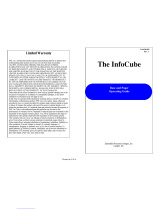 Embedded Processor Designs The InfoCube Operating instructions
Embedded Processor Designs The InfoCube Operating instructions
-
Fusion INTELPage IP 5 User manual
-
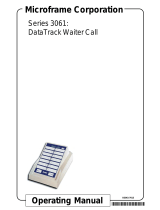 Microframe Corporation 3063 Series Operating instructions
Microframe Corporation 3063 Series Operating instructions
-
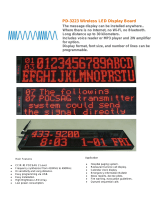 Wireless Devices Inc PD-3223 User manual
Wireless Devices Inc PD-3223 User manual
-
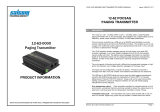 Salcom 12-62 POCSAG Product information
Salcom 12-62 POCSAG Product information
-
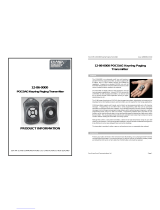 Salcom 12-86-5000 Product information
Salcom 12-86-5000 Product information
-
INTEK MDC-800EU Owner's manual
-
Sigma 980 User manual
-
Bosch PT-400 User manual

















